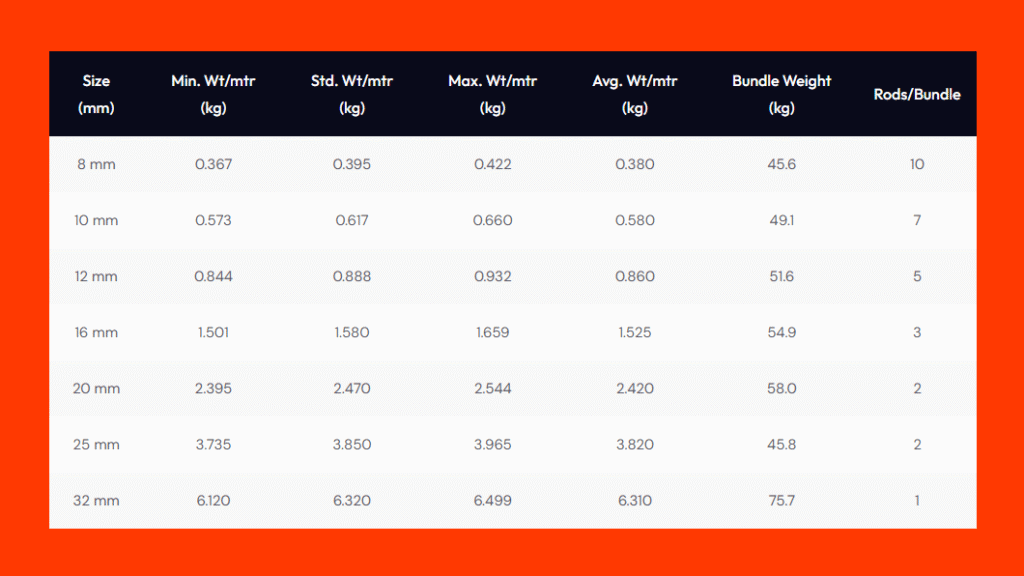TMT Bar Size & Weight Chart
Understanding the weight and size of TMT bars is crucial for accurate project planning, cost estimation, and structural safety. Whether you’re building a residential home, a commercial structure, or infrastructure, the TMT bar weight per meter plays a vital role in ensuring durability and strength.
Below is a detailed and easy-to-reference TMT Bar Size and Weight Chart to help you calculate the total steel requirement based on your project needs.
| Size (mm) | Min. Wt/mtr (kg) | Std. Wt/mtr (kg) | Max. Wt/mtr (kg) | Avg. Wt/mtr (kg) | Bundle Weight (kg) | Rods/Bundle |
|---|---|---|---|---|---|---|
| 8 mm | 0.367 | 0.395 | 0.422 | 0.380 | 45.6 | 10 |
| 10 mm | 0.573 | 0.617 | 0.660 | 0.580 | 49.1 | 7 |
| 12 mm | 0.844 | 0.888 | 0.932 | 0.860 | 51.6 | 5 |
| 16 mm | 1.501 | 1.580 | 1.659 | 1.525 | 54.9 | 3 |
| 20 mm | 2.395 | 2.470 | 2.544 | 2.420 | 58.0 | 2 |
| 25 mm | 3.735 | 3.850 | 3.965 | 3.820 | 45.8 | 2 |
| 32 mm | 6.120 | 6.320 | 6.499 | 6.310 | 75.7 | 1 |

Why TMT Bar Weight Matters
The weight of a TMT bar directly affects:
Structural load calculations
Steel consumption estimates
Overall project cost and safety
Transportation and storage planning
Knowing the exact weight per meter and rods per bundle helps engineers, contractors, and suppliers ensure precision and prevent material wastage.

